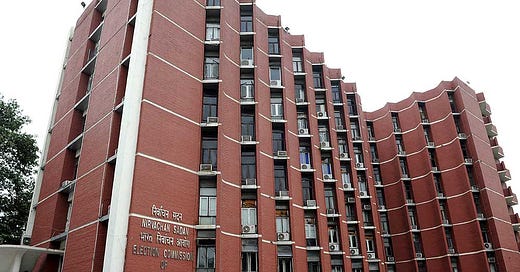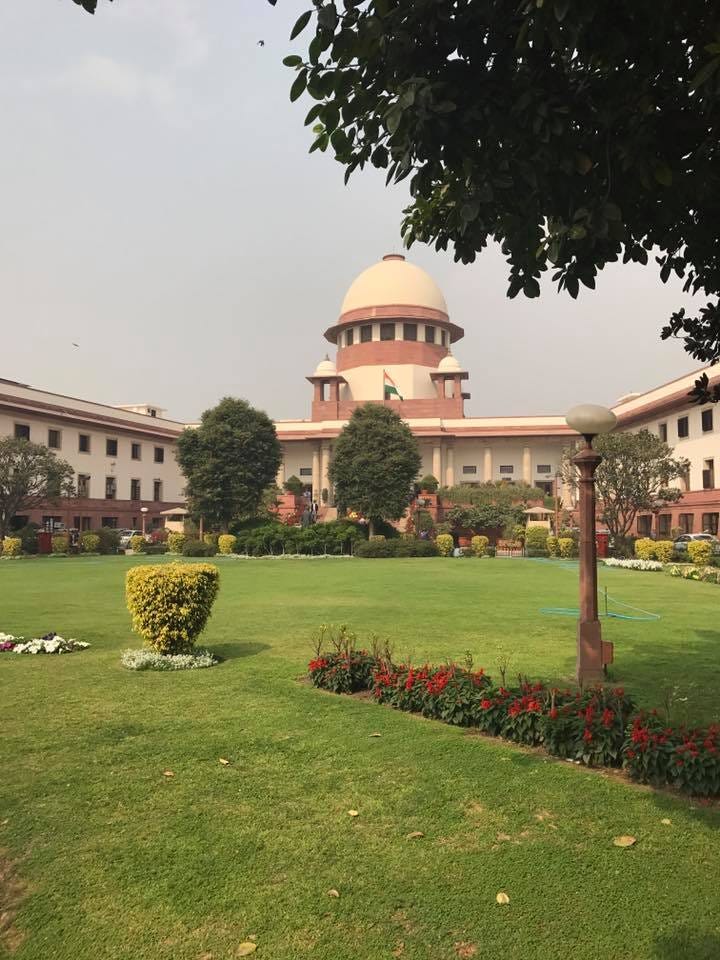What's the Big Deal about ECI's Booth-wise Forms No. 17C?
Supreme Court is seized of the matter but it may be too late for implementation in the current Lok Sabha elections.
Background on Form 17C
Form 17C is an important statutory document in the Indian electoral process, recording key details at each polling station. These include the identification numbers of Electronic Voting Machines (EVMs) used, the total number of registered voters assigned to the polling station, and the total number of voters who actually voted as per the register (Form 17A). Additionally, it notes the number of voters who chose not to vote after signing the register, those who were not allowed to vote, and the total votes recorded in each EVM after deducting test votes. Part II of Form 17C is particularly significant as it carries the final counting data entered on the counting day.
What is the Controversy?
The current controversy revolves around demands from the Association for Democratic Reforms (ADR) and Common Cause for the Election Commission of India (ECI) to publicly disclose the data recorded in Form 17C immediately after polling is completed, or within 48 hours thereof. These organisations have filed an application in the Supreme Court— in their PIL petitions already pending before the Apex Court— seeking directions for the ECI to upload scanned copies of Form 17C on its website soon after polling in each phase and to disclose absolute voter turnout numbers immediately, rather than just percentages.
The petitioners argue that such prompt disclosure will ensure transparency and allay concerns about any potential mismatch between the initial voter turnout percentages announced by the ECI and the final figures. During the hearing on May 17, the Supreme Court questioned the ECI's reluctance to disclose Form 17C data, asking pointedly, "Why can't Form 17C data be disclosed? What is the reservation about disclosing the 17C data?"
ECI's Response
In response, the ECI's counsel explained that compiling Form 17C data from all polling booths is a time-consuming process that cannot be completed overnight. They emphasized that Form 17C is provided to all candidates' polling agents, suggesting that candidates have the means to access this data. However, the petitioners countered that the sheer number of polling stations makes it challenging for candidates to independently collate and verify the Form 17C data.
Further concerns have been raised about unusual upward revisions in the final voter turnout percentages compared to the initial figures released by the ECI based on its Voter Turnout App data. These discrepancies have heightened calls for greater transparency in the reporting process.
Supreme Court's Involvement
On today, May 22, 2024, the ECI filed an affidavit before the Supreme Court stating that there is no legal mandate to publish booth-wise voter turnout data. They argued that disclosing such data, which includes postal ballot counts, could confuse voters, especially in close contests where the margin of victory may be very small. The ECI warned that the combined total of votes from Form 17C and postal ballots might be misunderstood, potentially leading to chaos and undermining trust in the electoral process.
The ECI also accused ADR of pursuing a campaign to discredit its functioning, citing past legal disputes where ADR's allegations were not substantiated. The affidavit highlighted that the petitioners were perpetuating conspiracy theories without concrete evidence, thereby damaging public confidence in the electoral system.
Legal and Public Implications
The ADR application, which is rooted in a 2019 PIL case, highlights a significant increase in final voter turnout figures compared to initial estimates for the ongoing 2024 Lok Sabha elections. This discrepancy, coupled with delays in announcing voter turnout, has fueled suspicions among voters and political parties regarding the accuracy of the data. The ADR is seeking directions for the ECI to upload scanned, legible copies of Form 17C Part-I on its website after each phase of polling, providing both constituency and polling station-wise figures in absolute numbers and percentages.
The ECI's affidavit underscores their stance against such disclosure, arguing that it is unnecessary and potentially harmful to the integrity of the electoral process. The outcome of this legal battle will have far-reaching implications for electoral transparency and the public's trust in the democratic process.
Our Take
There may not be a legal mandate for the ECI to disclose Form 17C data publicly, but if this document is already being handed over to the respective polling agents, what is the problem in putting this information on the website? Making this data accessible to the general public, political parties, candidates, journalists, and analysts would significantly enhance transparency and trust in the electoral process. In an era where proactive disclosures are the norm, and transparency is highly valued, the reluctance to share such crucial information raises questions about obfuscation and opaqueness.
While the ECI has raised concerns about the logistics of polling agents referring back to candidates and the potential for data manipulation, these challenges are not insurmountable. The effort required to upload Form 17C data is minimal compared to the high level of transparency it would provide. This simple action would not only address suspicions and quell rumours but also bolster the credibility of the Election Commission. It is a step that should be seriously considered, if not for the ongoing elections, then certainly for future ones. Transparent and accessible electoral data is a cornerstone of a robust democracy, and the ECI has the opportunity to set a new standard in electoral integrity.
Practical Benefits of Publishing Form 17C Data
Publishing the data by the ECI, apart from being in the interest of transparency and increasing the credibility of the entire process, will also provide valuable and authentic data for candidates, political parties, booth-level officials, and analysts. This information would allow them to scrutinise and examine which polling booths had high or low polling, including extraordinarily high or low turnout. At the counting stage, results are collated booth-wise—that is, EVM-wise—and the split of the valid votes polled in favour of each candidate is officially made available to the counting agents of the candidates. Coupled with the timely release of Form 17C data, it can be an invaluable source for all stakeholders. This will not only facilitate the analysis of various aspects of the election but also help in planning and strategising for future elections.
Summing Up
India is by far the largest democracy in the world, and the current Lok Sabha elections for 543 seats, spread over seven phases, is arguably the biggest ever free democratic election in history. A large number of foreign dignitaries and institutions, including election commissions or their equivalents, have been invited to witness the freeness, fairness, and integrity of the Indian election process. In a highly contested election campaign, during the peak of the torrid summer, allegations tend to fly free and loose. Some of these allegations claim—without any credible evidence—that the ECI is not genuinely a free and fair referee.
In this scenario, where we aim to set an example for the whole world, it would be desirable for the ECI to submit to the Supreme Court that it shall adopt this practice henceforth in future elections. This commitment to transparency will benefit all stakeholders internally and enhance the image of Indian democracy abroad and globally.







well balanced article. ECI should be as transparent as possible in my view since this is a democratic country and the principal actors are the people. Unfortunately, our ECI is behaving like Kings and either not taking timely action or taking belated action. Even the ECI has not been constituted in a transparent manner to instill confidence on the people. Indian democracy is going downhill in my opinion.